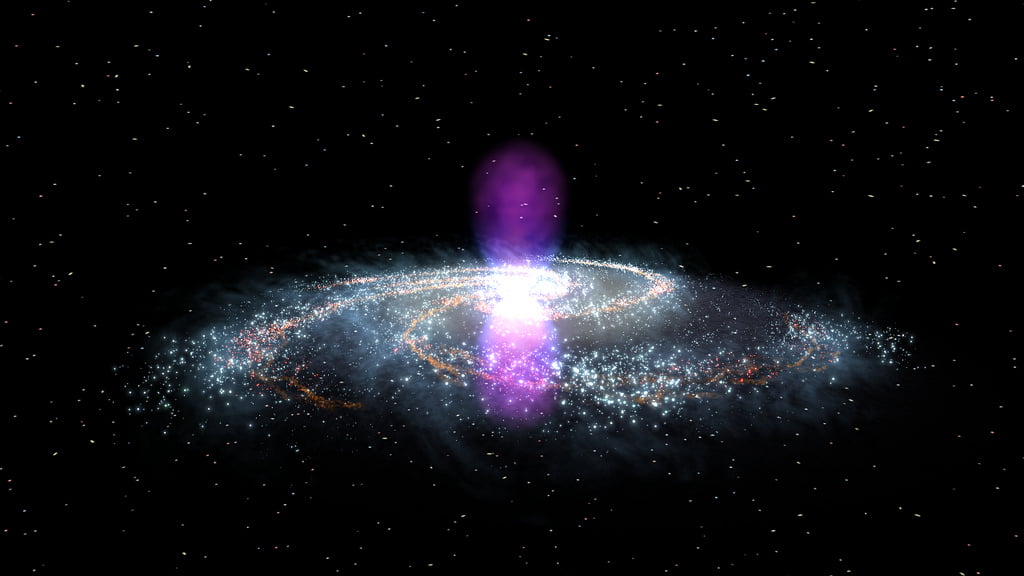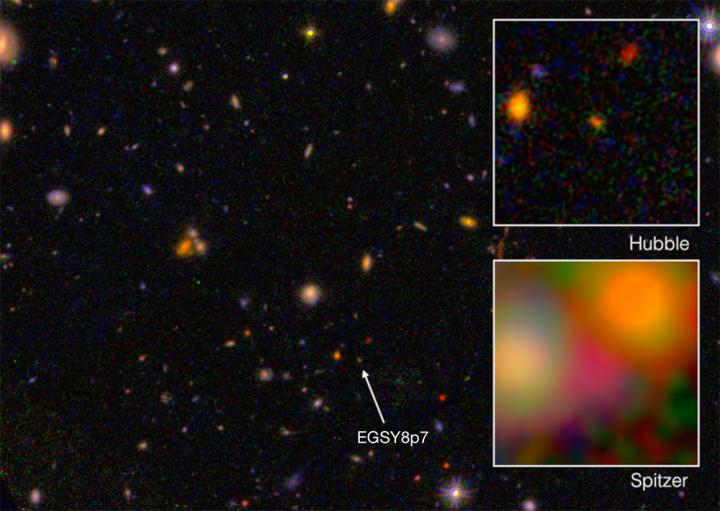When speaking of galaxy EGS8p7, “far out” would be an understatement.
A team of researchers at the California Institute of Technology, led by Israeli Adi Zitrin, reports that they have identified one of the oldest and most distant galaxies known to mankind. According to Zitrin, a NASA Hubble Postdoctoral Scholar in Astronomy, and Richard Ellis, a professor of astrophysics who joined in the research, the galaxy known as “EGS8p7” is about 13.2 billion-years-old. As a point of comparison, the known universe is 13.8 billion-years-old, meaning the EGS8p7 came into existence a mere 600 million years after the Big Bang.
The discovery is now forcing researchers across the world to rethink their understanding of what happened after the Big Bang.
SEE ALSO: Are We Alone In The Universe? Research Says Chances Of Advanced Alien Life Are Slim
Discovering the evolution of the universe
The Big Bang is the theory that posits that the universe continuously expands so out of its original dense, hot state, which was characterized by high amounts of free-roaming electrons, protons and photons. After a cooling period, protons and electrons began to mix together to form hydrogen atoms that allowed light to travel through space. This allowed for galaxies, like our own, to begin to form, as gravity could then begin pulling matter together. In most known galaxies, the clouds of hydrogen atoms absorbed radiation emitted from newly-formed galaxies, a process known as reionization, but as the researchers show, for EGS8p7, this was not the case.
Sign up for our free weekly newsletter
Subscribe“If you look at galaxies in the early universe, there is a lot of neutral hydrogen that is not transparent to this emission,” Zitrin said in a statement. “We expect that most of the radiation from this galaxy would be absorbed by the hydrogen in the intervening space. Yet still we see Lyman-alpha from this galaxy.” Lyman-alpha is an emission line of hydrogen through space, which, as stated above, usually indicates the formation of new galaxies or stars as the clouds of hydrogen absorb radiation. It is believed that Lyman-alpha emissions should have ended after the reionization process billions of years ago, but now the detection of Lyman-alpha lines may turn accepted astrophysical theories on their heads.
“The surprising aspect about the present discovery is that we detected this Lyman alpha line in an apparently faint galaxy…corresponding to a time when the universe should be full of absorbing hydrogen clouds,” Ellis stated. One possible explanation for this previously unobserved phenomenon is that the absorption of radiation by the hydrogen clouds did not occur in a uniform manner across all galaxies. In addition, it is possible that EGS8p7 is populated by unusually hot stars and that the hydrogen clouds were created, or reionized, much earlier than was previously thought.
SEE ALSO: New Research Maps The Location Of Our Gigantic Galactic Supercluster – Laniakea
The novelty of the finding also has to do with the distance of the EGS8p7 galaxy from our own. Using spectrometer data the team gathered from NASA’s Hubble Space Telescope and the Spitzer Space Telescope, they were able to discover the galaxy’s redshift, or the red light that extends from the galaxy that indicated its distance, similar to the way some sounds cause the Doppler effect. In the case of EGS8p7, its redshift reading is 8.68, while prior to the discovery, the most distant galaxy we were aware of had a redshift of 7.73.
“We are currently calculating more thoroughly the exact chances of finding this galaxy and seeing this emission from it, and to understand whether we need to revise the timeline of the reionization, which is one of the major key questions to answer in our understanding of the evolution of the universe,” Zitrin says.
Related posts

Resilient And Nutritious New Plant-Based Milk Aims To Make A Splash

Chocolate From Cultivated Cocoa Comes Without Environmental Toll

Plastic Fantastic: Startup Takes PVC Back To Its Crude Oil Roots






Facebook comments